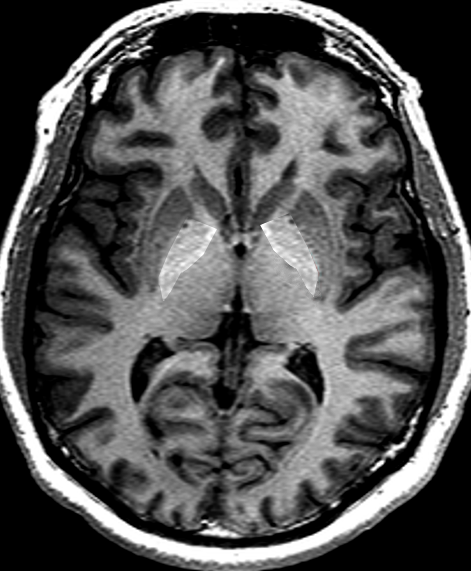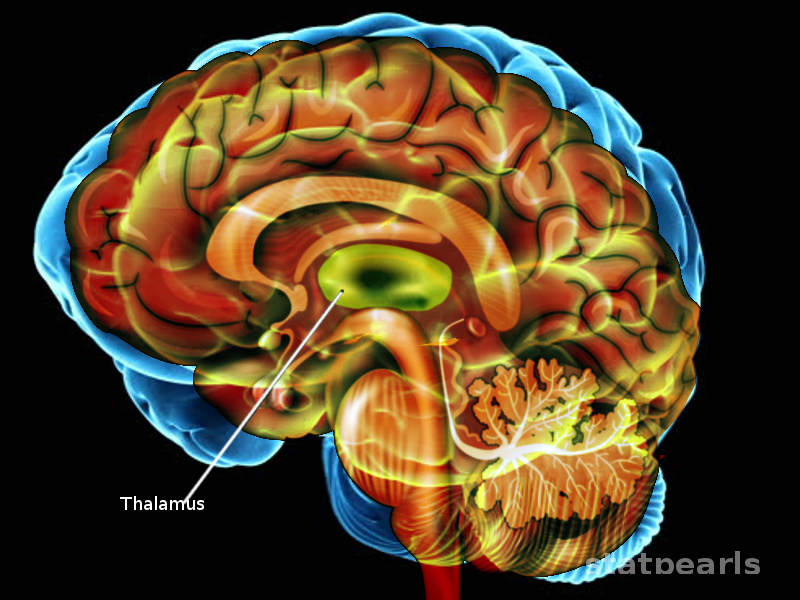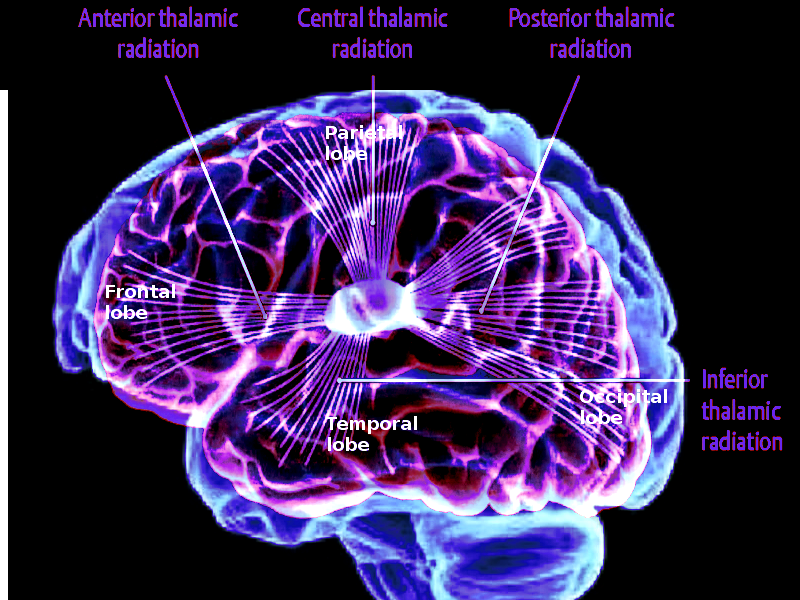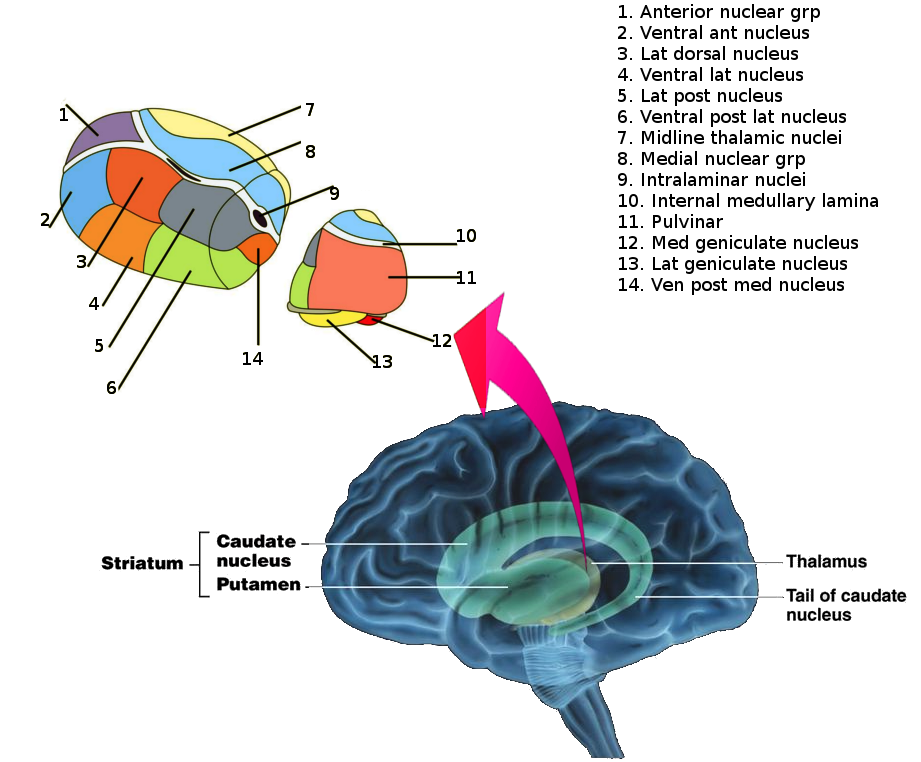[1]
Savage LM, Sweet AJ, Castillo R, Langlais PJ. The effects of lesions to thalamic lateral internal medullary lamina and posterior nuclei on learning, memory and habituation in the rat. Behavioural brain research. 1997 Jan:82(2):133-47
[PubMed PMID: 9030395]
[2]
Stein T, Moritz C, Quigley M, Cordes D, Haughton V, Meyerand E. Functional connectivity in the thalamus and hippocampus studied with functional MR imaging. AJNR. American journal of neuroradiology. 2000 Sep:21(8):1397-401
[PubMed PMID: 11003270]
[3]
Child ND, Benarroch EE. Anterior nucleus of the thalamus: functional organization and clinical implications. Neurology. 2013 Nov 19:81(21):1869-76. doi: 10.1212/01.wnl.0000436078.95856.56. Epub 2013 Oct 18
[PubMed PMID: 24142476]
[4]
Steriade M, Llinás RR. The functional states of the thalamus and the associated neuronal interplay. Physiological reviews. 1988 Jul:68(3):649-742
[PubMed PMID: 2839857]
[5]
Banerjee S, Shinde R, Sevick-Muraca EM. Probing Static Structure of Colloid-Polymer Suspensions with Multiply Scattered Light. Journal of colloid and interface science. 1999 Jan 1:209(1):142-153
[PubMed PMID: 9878147]
[7]
Scholpp S, Lumsden A. Building a bridal chamber: development of the thalamus. Trends in neurosciences. 2010 Aug:33(8):373-80. doi: 10.1016/j.tins.2010.05.003. Epub 2010 Jun 11
[PubMed PMID: 20541814]
[9]
Cinalli G, Aguirre DT, Mirone G, Ruggiero C, Cascone D, Quaglietta L, Aliberti F, Santi SD, Buonocore MC, Nastro A, Spennato P. Surgical treatment of thalamic tumors in children. Journal of neurosurgery. Pediatrics. 2018 Mar:21(3):247-257. doi: 10.3171/2017.7.PEDS16463. Epub 2017 Dec 22
[PubMed PMID: 29271729]
[10]
Afzal U, Farooq MU. Teaching neuroimages: thalamic aphasia syndrome. Neurology. 2013 Dec 3:81(23):e177. doi: 10.1212/01.wnl.0000436950.75473.af. Epub
[PubMed PMID: 24297806]
[12]
Ramachandran VS, McGeoch PD, Williams L. Can vestibular caloric stimulation be used to treat Dejerine-Roussy Syndrome? Medical hypotheses. 2007:69(3):486-8
[PubMed PMID: 17321064]
[14]
Kelemen A, Barsi P, Gyorsok Z, Sarac J, Szucs A, Halász P. Thalamic lesion and epilepsy with generalized seizures, ESES and spike-wave paroxysms--report of three cases. Seizure. 2006 Sep:15(6):454-8
[PubMed PMID: 16828318]
Level 3 (low-level) evidence
[15]
Kopelman MD, Thomson AD, Guerrini I, Marshall EJ. The Korsakoff syndrome: clinical aspects, psychology and treatment. Alcohol and alcoholism (Oxford, Oxfordshire). 2009 Mar-Apr:44(2):148-54. doi: 10.1093/alcalc/agn118. Epub 2009 Jan 16
[PubMed PMID: 19151162]
[16]
Rahme R, Moussa R, Awada A, Ibrahim I, Ali Y, Maarrawi J, Rizk T, Nohra G, Okais N, Samaha E. Acute Korsakoff-like amnestic syndrome resulting from left thalamic infarction following a right hippocampal hemorrhage. AJNR. American journal of neuroradiology. 2007 Apr:28(4):759-60
[PubMed PMID: 17416834]
[17]
Schenkein J, Montagna P. Self-management of fatal familial insomnia. Part 2: case report. MedGenMed : Medscape general medicine. 2006 Sep 14:8(3):66
[PubMed PMID: 17406189]
Level 3 (low-level) evidence
[18]
Jansen C, Parchi P, Jelles B, Gouw AA, Beunders G, van Spaendonk RM, van de Kamp JM, Lemstra AW, Capellari S, Rozemuller AJ. The first case of fatal familial insomnia (FFI) in the Netherlands: a patient from Egyptian descent with concurrent four repeat tau deposits. Neuropathology and applied neurobiology. 2011 Aug:37(5):549-53. doi: 10.1111/j.1365-2990.2010.01126.x. Epub
[PubMed PMID: 20874730]
Level 3 (low-level) evidence
[19]
Zeidler M, Sellar RJ, Collie DA, Knight R, Stewart G, Macleod MA, Ironside JW, Cousens S, Colchester AC, Hadley DM, Will RG. The pulvinar sign on magnetic resonance imaging in variant Creutzfeldt-Jakob disease. Lancet (London, England). 2000 Apr 22:355(9213):1412-8
[PubMed PMID: 10791525]
[20]
Burlina AP, Manara R, Caillaud C, Laissy JP, Severino M, Klein I, Burlina A, Lidove O. The pulvinar sign: frequency and clinical correlations in Fabry disease. Journal of neurology. 2008 May:255(5):738-44. doi: 10.1007/s00415-008-0786-x. Epub 2008 Feb 26
[PubMed PMID: 18297328]
[21]
Wolpert SM, Anderson M, Scott RM, Kwan ES, Runge VM. Chiari II malformation: MR imaging evaluation. AJR. American journal of roentgenology. 1987 Nov:149(5):1033-42
[PubMed PMID: 3499774]
[22]
Choi KD, Jung DS, Kim JS. Specificity of "peering at the tip of the nose" for a diagnosis of thalamic hemorrhage. Archives of neurology. 2004 Mar:61(3):417-22
[PubMed PMID: 15023820]




